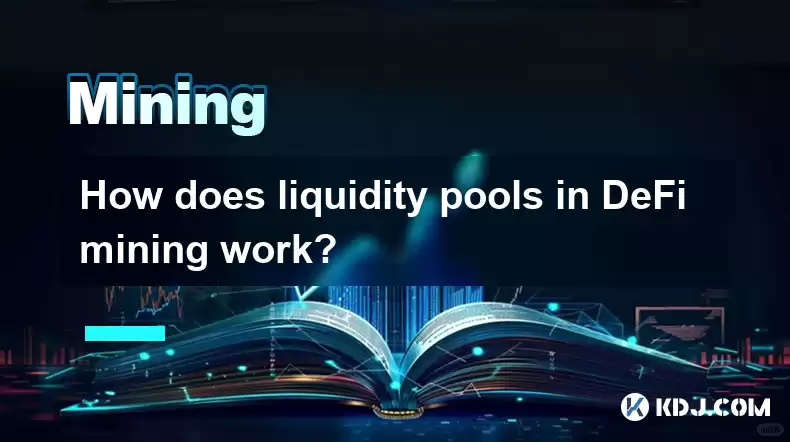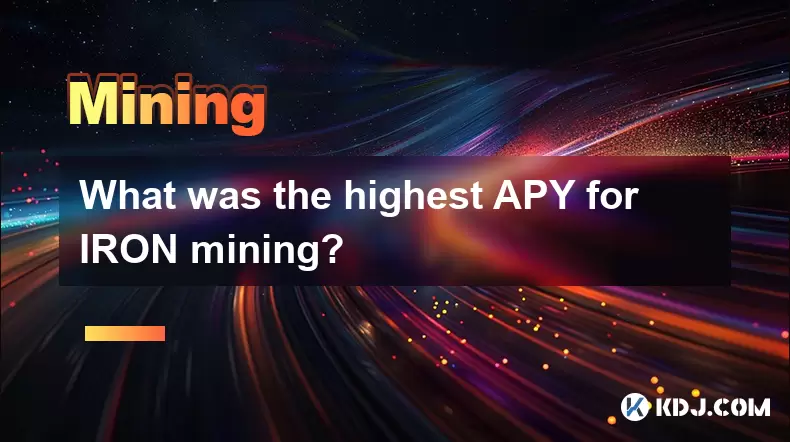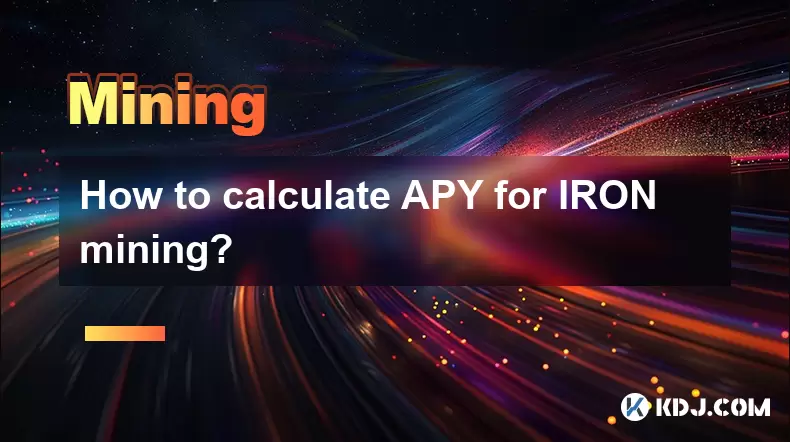-
 Bitcoin
Bitcoin $114200
0.00% -
 Ethereum
Ethereum $3637
0.56% -
 XRP
XRP $2.950
-2.01% -
 Tether USDt
Tether USDt $0.9999
0.02% -
 BNB
BNB $761.0
0.55% -
 Solana
Solana $164.1
-1.38% -
 USDC
USDC $0.9999
0.02% -
 TRON
TRON $0.3332
0.36% -
 Dogecoin
Dogecoin $0.2012
-0.52% -
 Cardano
Cardano $0.7261
-1.41% -
 Hyperliquid
Hyperliquid $37.62
-2.13% -
 Stellar
Stellar $0.3930
-2.65% -
 Sui
Sui $3.441
-0.16% -
 Bitcoin Cash
Bitcoin Cash $563.8
0.70% -
 Chainlink
Chainlink $16.50
0.09% -
 Hedera
Hedera $0.2424
-0.14% -
 Ethena USDe
Ethena USDe $1.001
0.01% -
 Avalanche
Avalanche $22.20
0.00% -
 Litecoin
Litecoin $118.0
-2.48% -
 UNUS SED LEO
UNUS SED LEO $8.991
0.12% -
 Toncoin
Toncoin $3.195
-3.87% -
 Shiba Inu
Shiba Inu $0.00001217
0.12% -
 Uniswap
Uniswap $9.674
-0.21% -
 Polkadot
Polkadot $3.633
1.00% -
 Monero
Monero $295.3
-0.82% -
 Dai
Dai $0.9999
0.00% -
 Bitget Token
Bitget Token $4.321
-0.41% -
 Cronos
Cronos $0.1392
0.73% -
 Pepe
Pepe $0.00001027
-0.89% -
 Aave
Aave $258.5
0.32%
How does liquidity pools in DeFi mining work?
DeFi liquidity pools, crucial for DEX operation, reward users with trading fees for providing paired tokens. However, impermanent loss—where holding assets individually yields higher returns—is a key risk, mitigated by strategies like selecting low-volatility pairs and understanding market trends.
Mar 23, 2025 at 02:08 pm

Key Points:
- Liquidity pools are the foundation of many DeFi protocols, providing the necessary funds for decentralized exchanges (DEXs) to operate.
- Providing liquidity to a pool involves depositing pairs of tokens, earning trading fees as a reward.
- Impermanent loss is a significant risk, where holding tokens individually would have yielded higher returns than providing liquidity.
- Various strategies exist to mitigate impermanent loss, including selecting low-volatility token pairs and understanding market trends.
- Yield farming involves leveraging deposited liquidity in various DeFi protocols for enhanced returns, often involving multiple pools.
How Does Liquidity Pools in DeFi Mining Work?
Decentralized Finance (DeFi) has revolutionized traditional finance by leveraging blockchain technology to create trustless and transparent financial systems. A core component of this revolution is the liquidity pool, a crucial element in DeFi mining and yield farming strategies. These pools are essentially collections of cryptocurrencies locked in a smart contract, providing the necessary funds for decentralized exchanges (DEXs) to operate. Without liquidity pools, DEXs would struggle to facilitate trades.
The mechanism is straightforward. Users deposit pairs of tokens – for instance, ETH and USDC – into a smart contract. This creates liquidity for traders on the DEX to swap between these tokens. In return for providing this liquidity, users earn a share of the trading fees generated by these swaps. The share received is proportional to the amount of liquidity provided. The more tokens deposited, the larger the share of trading fees earned.
However, there's a significant risk associated with providing liquidity: impermanent loss. This occurs when the relative price of the deposited tokens changes after they are added to the pool. If one token's price appreciates significantly compared to the other, you would have earned more by simply holding the assets individually.
For example, imagine you deposit 1 ETH and 1000 USDC when ETH is priced at $1000. If ETH's price doubles to $2000, while USDC remains stable, you'd have made more profit by simply holding your ETH and USDC separately. Impermanent loss represents the difference between your profits from providing liquidity versus holding your assets. This loss is only "impermanent" until you withdraw your assets from the pool. If the prices revert to their original ratio before withdrawal, the loss disappears.
Several strategies can help mitigate impermanent loss. One approach is to choose low-volatility token pairs. Stablecoins paired with a relatively stable asset, such as a blue-chip cryptocurrency, minimizes price fluctuations and therefore the risk of impermanent loss. Another strategy is to carefully analyze market trends and understand the potential price movements of the tokens you're considering.
Yield farming takes liquidity provision a step further. It involves strategically moving your liquidity between various DeFi protocols to maximize returns. This often involves using borrowed funds or leveraging your existing liquidity across multiple pools, potentially compounding your earnings. However, this comes with increased risk, as leveraged positions amplify both profits and losses.
Understanding the concept of impermanent loss is crucial before participating in liquidity pools. Many platforms offer calculators to estimate potential impermanent loss based on different price scenarios. It's important to thoroughly research and understand the risks before committing funds to a liquidity pool. Remember, while the potential for high returns exists, it’s crucial to carefully weigh the associated risks.
Yield Farming Strategies:
Yield farming involves utilizing liquidity provision to generate higher returns. This often entails moving funds between different liquidity pools to capitalize on higher yields.
- Staking: Staking involves locking your tokens to support the network's security and earn rewards. Many DeFi protocols offer staking rewards alongside liquidity provision.
- Compounding: Regularly reinvesting earned rewards to increase your principal amount and accelerate earnings.
- Diversification: Spreading your liquidity across multiple pools and protocols to mitigate risk.
- Risk Management: Closely monitoring market conditions and adjusting your strategy accordingly.
Common Questions:
Q: What are the risks associated with liquidity pool participation?
A: The primary risk is impermanent loss, where holding assets individually would have been more profitable. Additionally, smart contract vulnerabilities, rug pulls (where developers abscond with funds), and market volatility all pose significant risks.
Q: How do I choose a suitable liquidity pool?
A: Consider the token pair's volatility, the trading fees offered, the reputation of the DeFi protocol, and the overall security of the smart contract. Research and due diligence are crucial.
Q: What is the difference between liquidity mining and yield farming?
A: Liquidity mining typically focuses on providing liquidity to a single pool for earning trading fees. Yield farming is a broader term encompassing multiple strategies, including liquidity mining, to maximize returns across various DeFi protocols.
Q: How can I minimize impermanent loss?
A: Choose low-volatility token pairs, carefully analyze market trends, and consider the time horizon of your investment. Understanding your risk tolerance is also crucial.
Q: Are there any fees associated with liquidity pools?
A: Yes, there are typically gas fees for transactions on the blockchain, and some protocols may charge additional fees for using their services. Trading fees are earned by liquidity providers, not paid by them.
Disclaimer:info@kdj.com
The information provided is not trading advice. kdj.com does not assume any responsibility for any investments made based on the information provided in this article. Cryptocurrencies are highly volatile and it is highly recommended that you invest with caution after thorough research!
If you believe that the content used on this website infringes your copyright, please contact us immediately (info@kdj.com) and we will delete it promptly.
- Fast-Moving Cryptos: Could Pudgy Penguins Deliver High Gains by 2025?
- 2025-08-06 16:30:11
- Crypto Gaming Tokens: August 2025 Investment Opportunities
- 2025-08-06 16:50:12
- Flipster, Kaia, and Stablecoin Access: Bridging Crypto to Everyday Life in Asia
- 2025-08-06 16:50:12
- Superp ($SUP) Takes Flight on Binance Alpha: A New Era for On-Chain Perpetual Trading
- 2025-08-06 16:30:11
- Indonesia's Crypto Tax Tightrope: Balancing Revenue and Bitcoin Adoption
- 2025-08-06 17:10:12
- Nissan Magnite Kuro: India's Black Edition Steals the Show
- 2025-08-06 16:56:02
Related knowledge

What was the highest APY for IRON mining?
Jul 23,2025 at 05:14am
Understanding IRON Token and Its Mining MechanismThe IRON token is a stablecoin that operates within the Iron Finance ecosystem, primarily on blockcha...

What is impermanent loss in IRON pools?
Jul 23,2025 at 09:00am
Understanding Impermanent Loss in the Context of IRON PoolsImpermanent loss is a phenomenon that affects liquidity providers in decentralized finance ...

How to claim rewards from IRON mining?
Jul 23,2025 at 02:21pm
Understanding IRON Mining and Reward MechanismsIRON Finance operated as a decentralized finance (DeFi) protocol on the Polygon and Binance Smart Chain...

How to claim rewards from IRON mining?
Jul 29,2025 at 05:07am
Understanding IRON Mining and Reward MechanismIRON is a dual-token system designed to stabilize the value of a synthetic asset through a combination o...

IRON mining tutorial for beginners
Jul 27,2025 at 12:01am
What Is IRON and How Does It Work in the Cryptocurrency Ecosystem?IRON is a cryptocurrency token that operates on the Binance Smart Chain (BSC) and is...

How to calculate APY for IRON mining?
Jul 28,2025 at 09:49am
Understanding APY in the Context of IRON Token MiningWhen engaging in IRON token mining within decentralized finance (DeFi) platforms, Annual Percenta...

What was the highest APY for IRON mining?
Jul 23,2025 at 05:14am
Understanding IRON Token and Its Mining MechanismThe IRON token is a stablecoin that operates within the Iron Finance ecosystem, primarily on blockcha...

What is impermanent loss in IRON pools?
Jul 23,2025 at 09:00am
Understanding Impermanent Loss in the Context of IRON PoolsImpermanent loss is a phenomenon that affects liquidity providers in decentralized finance ...

How to claim rewards from IRON mining?
Jul 23,2025 at 02:21pm
Understanding IRON Mining and Reward MechanismsIRON Finance operated as a decentralized finance (DeFi) protocol on the Polygon and Binance Smart Chain...

How to claim rewards from IRON mining?
Jul 29,2025 at 05:07am
Understanding IRON Mining and Reward MechanismIRON is a dual-token system designed to stabilize the value of a synthetic asset through a combination o...

IRON mining tutorial for beginners
Jul 27,2025 at 12:01am
What Is IRON and How Does It Work in the Cryptocurrency Ecosystem?IRON is a cryptocurrency token that operates on the Binance Smart Chain (BSC) and is...

How to calculate APY for IRON mining?
Jul 28,2025 at 09:49am
Understanding APY in the Context of IRON Token MiningWhen engaging in IRON token mining within decentralized finance (DeFi) platforms, Annual Percenta...
See all articles

























































































